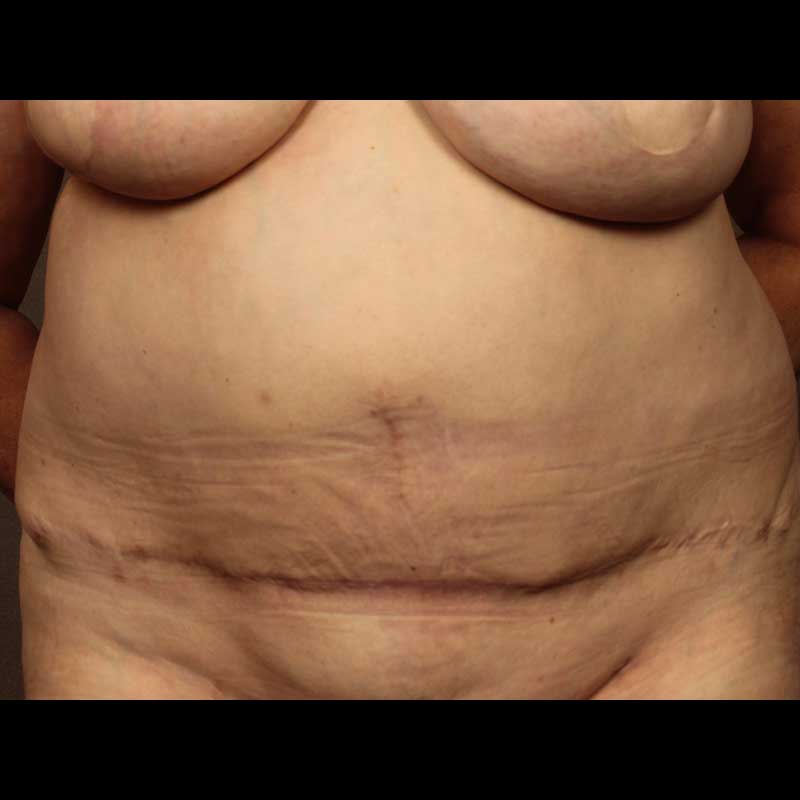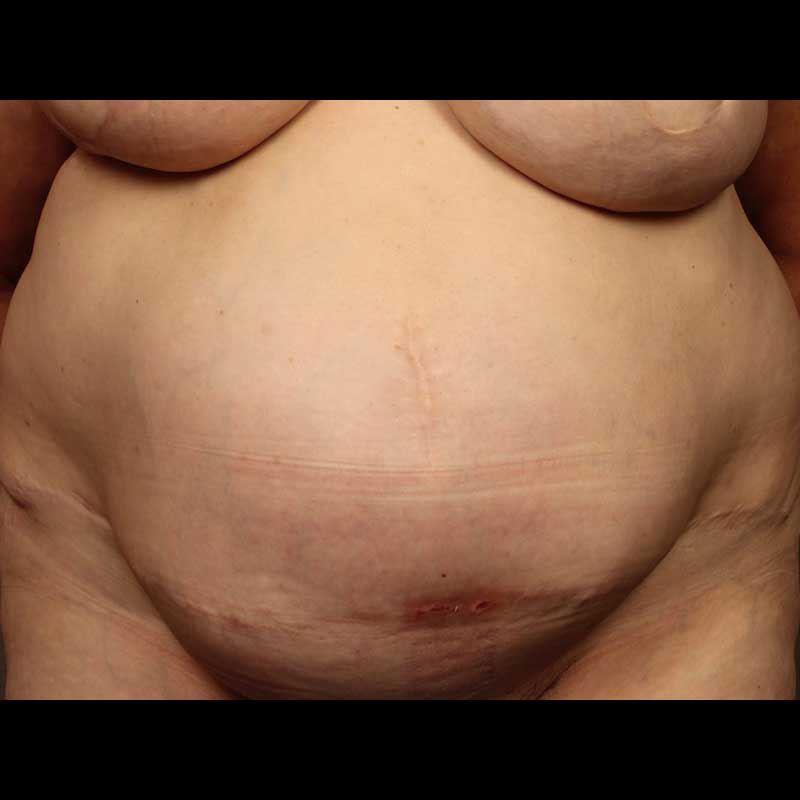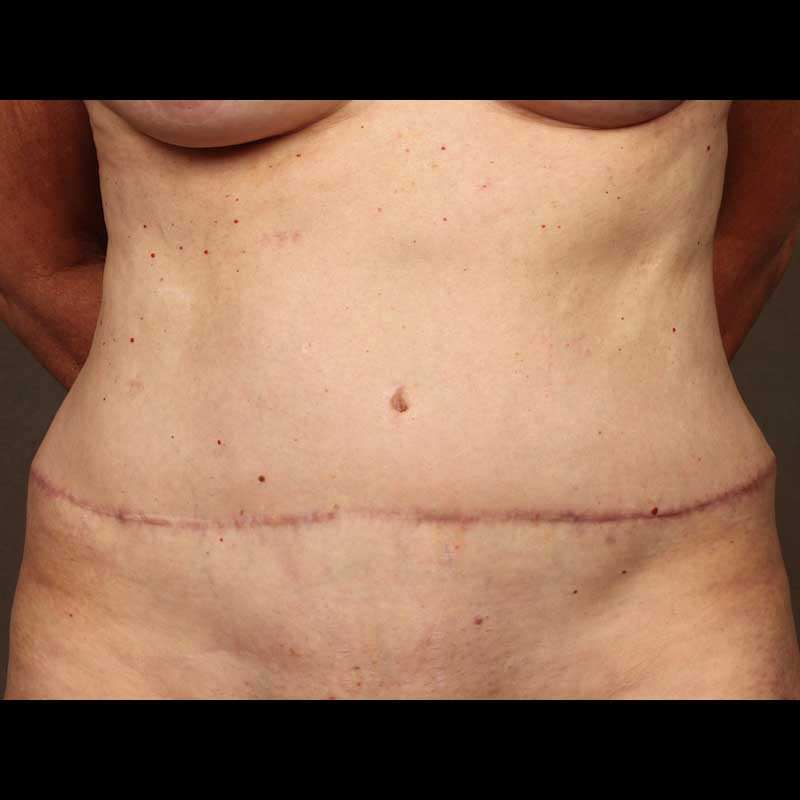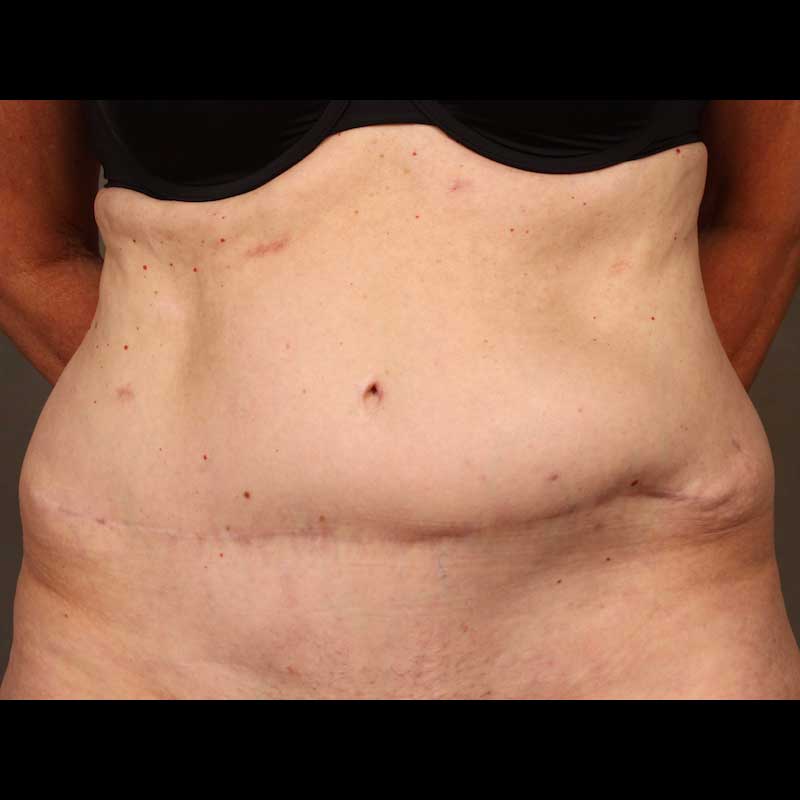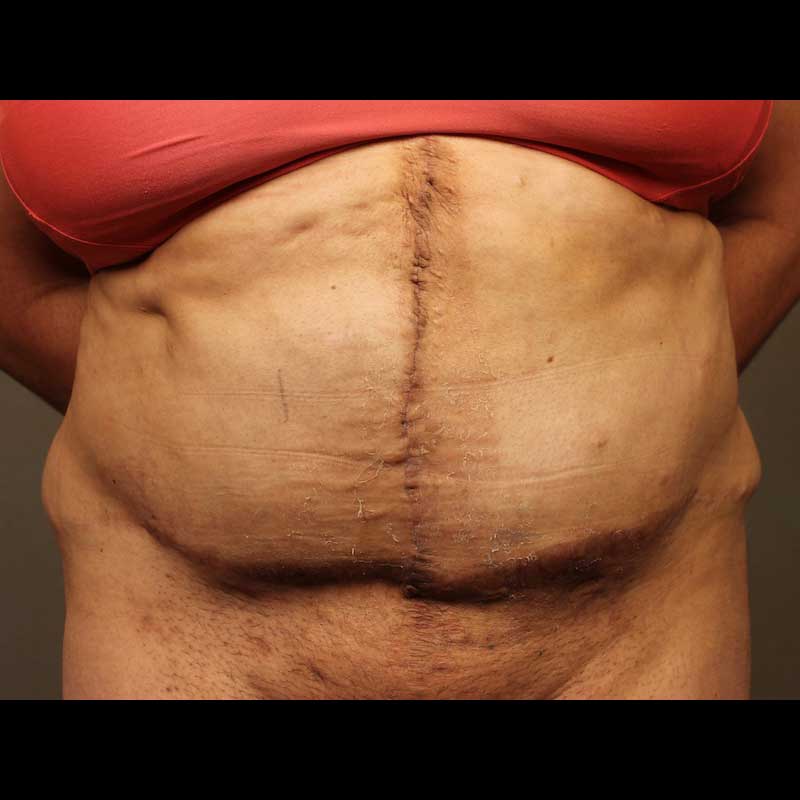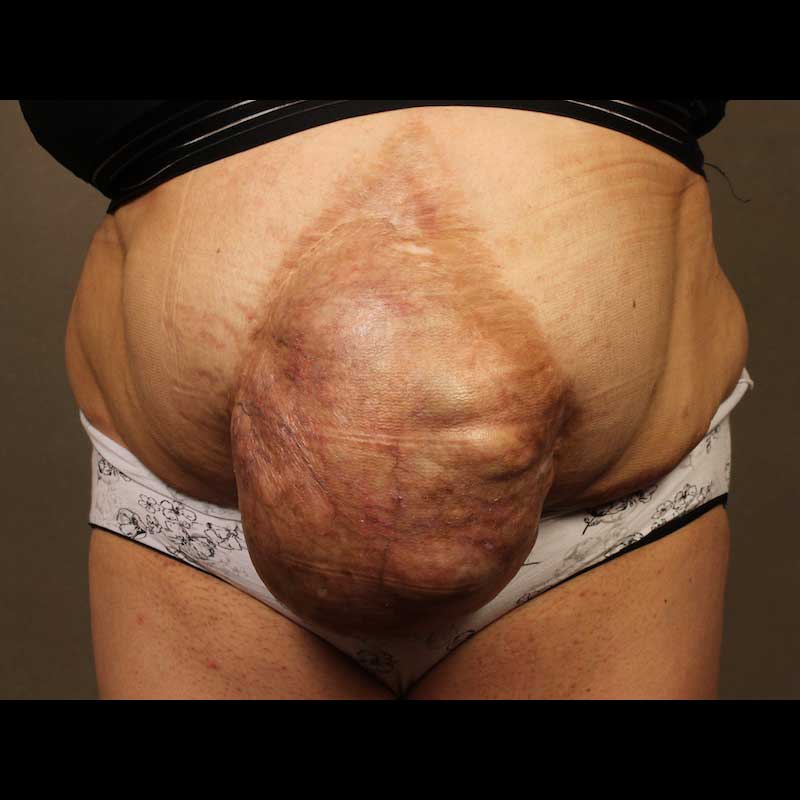Summary
Women who have had traditional pedicled TRAM flap breast reconstruction have a high risk of developing lower abdominal weakness and contour deformities. These contour abnormalities include unnatural protrusions and bulges, as well as areas of laxity that can develop into hernias. Although the risk is smaller, hernias may also develop after DIEP flap breast reconstruction. We pioneered a unique and reliable abdominal wall reconstruction procedure to repair these types of issues.
TRAM related abdominal bulges and hernias can be difficult for many surgeons to repair, because there is muscle missing from the initial TRAM flap surgery. The contour abnormalities and extent of abdominal protrusion associated with TRAM hernias can also be severe. Unfortunately, many women are told that they have no good options to repair their TRAM hernias or correct their associated abdominal deformities. Many other women undergo attempts at hernia repair that end with recurrent hernias and bulges.
We offer our unique abdominal wall reconstruction procedure to help women who have developed TRAM related hernias that is customized to each patient. If you have developed a TRAM bulge or hernia, you can arrange a consultation with the surgeons at NYBRA Plastic Surgery. During a visit with our surgeons, we will explain how our procedure can provide a stable hernia repair while improving abdominal wall contour.
Types of procedures
- Repair of minor deformities: In some cases, minor contour deformities may be corrected by removing loose skin and tightening the abdominal fascia with stitches.
- Repair of large bulges and hernias: Our technique for repair of large TRAM hernias involves reinforcing a mesh repair with muscle flaps. It was first published in the Annals of Plastic Surgery in 2009. We utilize a team approach for all of our TRAM hernia repairs, working together with a general surgeon who is an expert in hernia repair.
Procedure details
- The healed TRAM incision is reopened and the area of hernia and bulging is identified
- Since areas of weakness can vary in different patients, this approach allows us to customize the repair based on individual patient needs
- Both external oblique muscles are elevated and different areas of weakness are specifically addressed with suture plication
- An extended mesh is then secured to ligaments on the lower abdominal wall
- The external oblique muscles are then advanced over the mesh to reinforce and strengthen the repair
- This approach avoids the need to enter the abdominal cavity while repairing the hernia and correcting bulging of the abdominal wall
- The abdominal skin is closed with quilting sutures
Risks & Benefits
Other approaches to TRAM hernia repair have a high incidence of hernia recurrence. More complicated methods of repair using mesh placed inside the abdomen, either with an open incision or with laparoscopy, do not reliably correct the bulges and contour deformities due to TRAM hernias.
In our procedure, reinforcement of an extended mesh with external oblique muscle flaps reliably repairs TRAM related hernias with minimal risk of recurrence. In addition, this approach corrects the associated abdominal wall bulges and contour deformities that are not always addressed by other techniques. For over a decade, we have had the opportunity to help women with TRAM bulges from our region as well as women from throughout the country.
Frequently Asked Questions
I had a large TRAM hernia that my surgeon repaired with mesh. The hernia came back and it’s bigger now than it was before. Should my mesh be removed?
In some cases the old mesh needs to be removed, while in other cases it does not. If your old mesh is not removed, it may be possible to incorporate the old mesh into a new, stronger hernia repair. Regardless of whether the old mesh is removed, our approach focuses on reconstructing the abdominal wall to provide the best possible form and function.
With the TRAM hernia that I developed, my abdomen bulges out and feels very weak. I need to wear a binder all the time. How can I get my strength back?
Our extended mesh TRAM hernia repair procedure involves advancing the intact external oblique muscles toward the midline of the abdomen. This reconstructive approach can help return the abdominal wall anatomy closer to what it was before the TRAM flap surgery. With physical therapy and core strengthening exercises, our abdominal wall reconstruction patients regain function and have a stronger abdominal wall.
